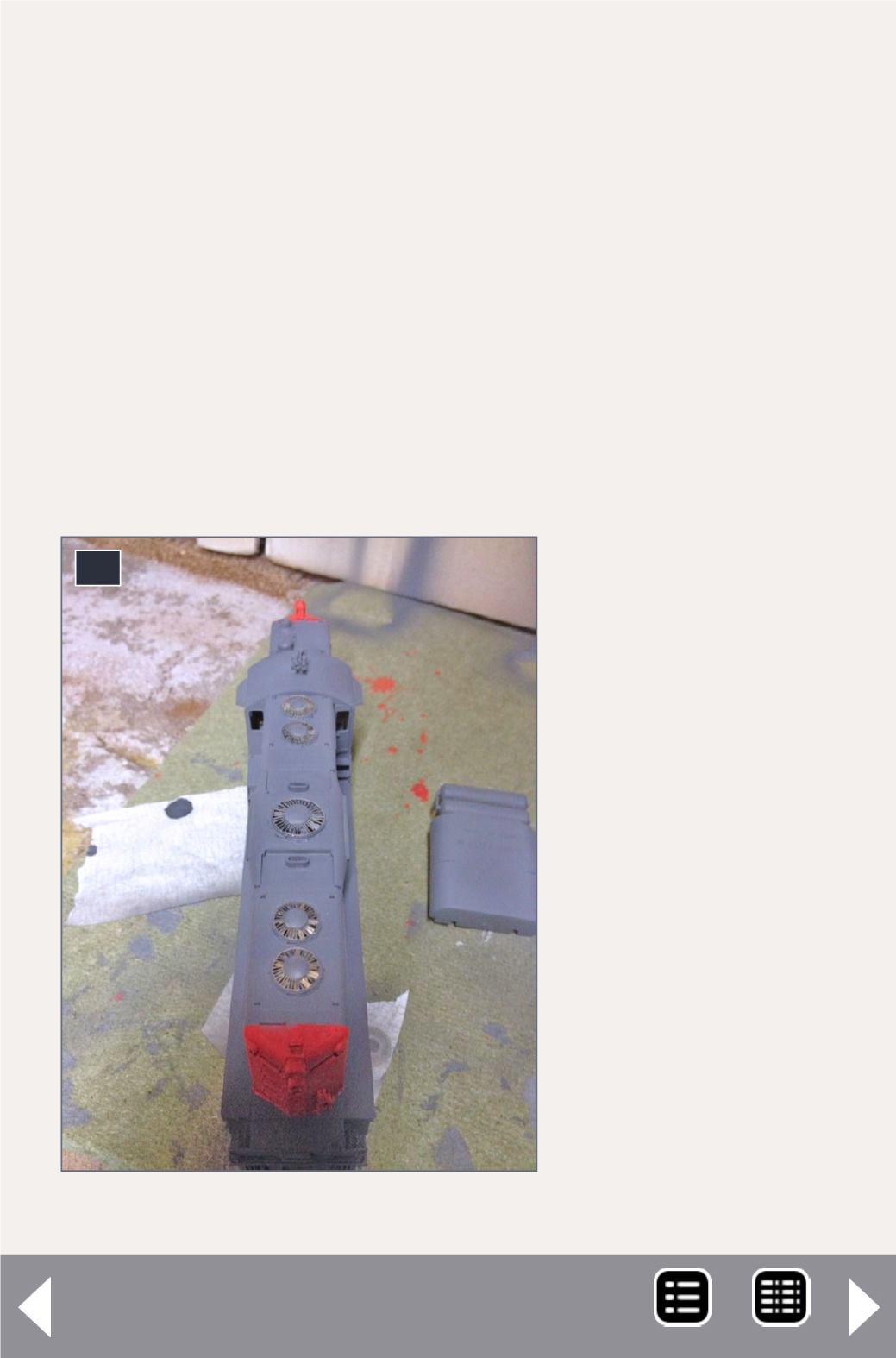
slowly that it takes upwards of 20 seconds to move the distance
between two ties on the track, and that’s just using the build in
“auto tune” function of these decoders. While I know that such
speeds will rarely be used in the real world, it is very important
for the transition from standstill to moving, or vice versa, and to
have a very smooth running loco with no sudden speed changes.
With the exception of the red emergency lights, I used individual
0.8 mm micro LEDs in warm white color to light the headlights
and the gyralights. Eight are used. I parallel wired two of them
to each decoder light/function output. These already have build
in 2200 ohm resistors so no external resistors are needed. As
you can see from the pictures, the lights are more than bright
enough, but can be
further dimmed by
using the correspond-
ing CVs if you so wish.
As these are very
small LEDs, the best
way of fitting them
was to add a drop of
Micro Krystal Klear
to each lens open-
ing with a toothpick.
I guided the wires
through from the
outside very gently,
until the LED is just
recessed inside the
lens opening. Once
this dried, I add more
to seal it up and form
a clear lens. Doing this
12
12. The Cannon fans installed.
SP GP9 commuter loco - 7
MRH-Sep 2014


